-
EXECUTIVE SUMMARY
-
\r\n1.1 MARKET ATTRACTIVENESS ANALYSIS 23
-
\r\n1.1.1
-
GLOBAL AUTOMOTIVE COOLANT MARKET, BY TECHNOLOGY 24
-
\r\n1.1.2 GLOBAL AUTOMOTIVE
-
COOLANT MARKET, BY PRODUCT 25
-
\r\n1.1.3 GLOBAL AUTOMOTIVE COOLANT MARKET,
-
BY VEHICLE TYPE 26
-
\r\n1.1.4 GLOBAL AUTOMOTIVE COOLANT MARKET, BY END USE
-
27
-
\r\n1.1.5 GLOBAL AUTOMOTIVE COOLANT MARKET, BY REGION 28
-
\r\n2 MARKET
-
INTRODUCTION
-
\r\n2.1 DEFINITION 29
-
\r\n2.2 SCOPE OF THE STUDY 29
-
\r\n2.3
-
MARKET STRUCTURE 29
-
\r\n3 RESEARCH METHODOLOGY
-
\r\n3.1 RESEARCH PROCESS
-
30
-
\r\n3.2 PRIMARY RESEARCH 31
-
\r\n3.3 SECONDARY RESEARCH 31
-
\r\n3.4
-
MARKET SIZE ESTIMATION 32
-
\r\n3.5 FORECAST MODEL 34
-
\r\n3.6 LIST OF
-
ASSUMPTIONS 34
-
\r\n4 MARKET DYNAMICS
-
\r\n4.1 INTRODUCTION 35
-
\r\n4.2
-
DRIVERS 37
-
\r\n4.2.1 INCREASING DEMAND IN THE GLOBAL AUTOMOTIVE AFTERMARKET
-
37
-
\r\n4.2.2 GROWING SALE OF COMMERCIAL VEHICLES ACROSS THE GLOBE 38
-
\r\n4.2.3
-
DRIVERS IMPACT ANALYSIS 40
-
\r\n4.3 RESTRAINTS 41
-
\r\n4.3.1 VOLATILE
-
RAW MATERIAL (CRUDE OIL) PRICES 41
-
\r\n4.3.2 RESTRAINTS IMPACT ANALYSIS 42
-
\r\n4.4
-
OPPORTUNITIES 42
-
\r\n4.4.1 EXPANDING AUTOMOTIVE INDUSTRY IN LATIN AMERICA
-
AND THE MIDDLE EAST 42
-
\r\n4.5 CHALLENGES 43
-
\r\n4.5.1 INCREASING ADOPTION
-
OF ELECTRIC VEHICLES 43
-
\r\n5 MARKET FACTOR ANALYSIS
-
\r\n5.1 SUPPLY
-
CHAIN ANALYSIS 45
-
\r\n5.1.1 RAW MATERIALS SUPPLIERS 46
-
\r\n5.1.1.1 RAW
-
MATERIAL SUPPLIERS OF ETHYLENE GLYCOL 46
-
\r\n5.1.1.2 RAW MATERIAL SUPPLIERS
-
OF PROPYLENE GLYCOL 46
-
\r\n5.1.2 AUTOMOTIVE COOLANT PRODUCERS 46
-
\r\n5.1.3
-
DISTRIBUTION CHANNELS 46
-
\r\n5.1.4 END USE 47
-
\r\n5.2 PORTER’S
-
FIVE FORCES MODEL 48
-
\r\n5.2.1 THREAT OF NEW ENTRANTS 49
-
\r\n5.2.2 RIVALRY
-
49
-
\r\n5.2.3 THREAT OF SUBSTITUTES 49
-
\r\n5.2.4 BARGAINING POWER OF
-
SUPPLIERS 49
-
\r\n5.2.5 BARGAINING POWER OF BUYERS 50
-
\r\n5.3 PRICING
-
ANALYSIS – BY REGION (USD/GALLON), 2023 50
-
\r\n5.4 GLOBAL AUTOMOTIVE
-
SALES AND PRODUCTION OVERVIEW (2023-2032) 50
-
\r\n5.5 REGULATORY CONTEXT 51
-
\r\n5.5.1
-
STANDARD SPECIFICATION FOR GLYCOL BASE ENGINE COOLANT FOR AUTOMOBILE AND LIGHT-DUTY
-
SERVICE 51
-
\r\n5.6 IMPACT OF COVID-19 53
-
\r\n6 GLOBAL AUTOMOTIVE COOLANTS
-
MARKET, BY TECHNOLOGY
-
\r\n6.1 OVERVIEW 56
-
\r\n6.1.1 AUTOMOTIVE COOLANTS:
-
MARKET ESTIMATES & FORECAST BY TECHNOLOGY, 2023-2032 57
-
\r\n6.1.2 AUTOMOTIVE
-
COOLANTS: MARKET ESTIMATES & FORECAST BY TECHNOLOGY, 2023-2032 58
-
\r\n6.2
-
INORGANIC ADDITIVE TECHNOLOGY (IAT) 59
-
\r\n6.2.1 INORGANIC ADDITIVE TECHNOLOGY
-
(IAT): MARKET ESTIMATES & FORECAST BY REGION,2023-2032 59
-
\r\n6.3 ORGANIC
-
ADDITIVE TECHNOLOGY (OAT) 60
-
\r\n6.3.1 ORGANIC ADDITIVE TECHNOLOGY (OAT):
-
MARKET ESTIMATES & FORECAST BY REGION,2023-2032 61
-
\r\n6.4 HYBRID ORGANIC
-
ACID TECHNOLOGY (HOAT) 62
-
\r\n6.4.1 HYBRID ORGANIC ACID TECHNOLOGY (HOAT):
-
MARKET ESTIMATES & FORECAST BY REGION,2023-2032 62
-
\r\n7 GLOBAL AUTOMOTIVE
-
COOLANTS MARKET, BY PRODUCT
-
\r\n7.1 OVERVIEW 64
-
\r\n7.1.1 AUTOMOTIVE
-
COOLANTS: MARKET ESTIMATES & FORECAST BY PRODUCT, 2023-2032 65
-
\r\n7.1.2
-
AUTOMOTIVE COOLANTS: MARKET ESTIMATES & FORECAST BY PRODUCT, 2023-2032 66
-
\r\n7.2
-
ETHYLENE GLYCOL 67
-
\r\n7.2.1 ETHYLENE GLYCOL: MARKET ESTIMATES & FORECAST
-
BY REGION, 2023-2032 67
-
\r\n7.3 PROPYLENE GLYCOL 68
-
\r\n7.3.1 PROPYLENE
-
GLYCOL: MARKET ESTIMATES & FORECAST BY REGION, 2023-2032 69
-
\r\n7.4 GLYCERIN
-
70
-
\r\n7.4.1 GLYCERIN: MARKET ESTIMATES & FORECAST BY REGION, 2023-2032
-
70
-
\r\n7.5 OTHERS 71
-
\r\n7.5.1 OTHERS: MARKET ESTIMATES & FORECAST
-
BY REGION, 2023-2032 71
-
\r\n8 GLOBAL AUTOMOTIVE COOLANTS MARKET, BY VEHICLE
-
TYPE
-
\r\n8.1 OVERVIEW 73
-
\r\n8.1.1 AUTOMOTIVE COOLANTS: MARKET ESTIMATES
-
& FORECAST BY VEHICLE TYPE, 2023-2032 74
-
\r\n8.1.2 AUTOMOTIVE COOLANTS:
-
MARKET ESTIMATES & FORECAST BY VEHICLE TYPE, 2023-2032 75
-
\r\n8.2 PASSENGER
-
CARS 76
-
\r\n8.2.1 PASSENGER CARS: MARKET ESTIMATES & FORECAST BY REGION,
-
\r\n8.2.2 PASSENGER CARS: MARKET ESTIMATES & FORECAST BY
-
REGION, 2023-2032 77
-
\r\n8.3 HEAVY COMMERCIAL VEHICLES 77
-
\r\n8.3.1
-
HEAVY COMMERCIAL VEHICLES: MARKET ESTIMATES & FORECAST BY REGION, 2023-2032
-
78
-
\r\n8.3.2 HEAVY COMMERCIAL VEHICLES: MARKET ESTIMATES & FORECAST BY
-
REGION, 2023-2032 78
-
\r\n8.4 LIGHT COMMERCIAL VEHICLES 79
-
\r\n8.4.1
-
LIGHT COMMERCIAL VEHICLES: MARKET ESTIMATES & FORECAST BY REGION, 2023-2032
-
79
-
\r\n8.4.2 LIGHT COMMERCIAL VEHICLES: MARKET ESTIMATES & FORECAST BY
-
REGION, 2023-2032 80
-
\r\n8.5 OTHERS 80
-
\r\n8.5.1 OTHERS: MARKET ESTIMATES
-
& FORECAST BY REGION, 2023-2032 80
-
\r\n8.5.2 OTHERS: MARKET ESTIMATES
-
& FORECAST BY REGION, 2023-2032 81
-
\r\n9 GLOBAL AUTOMOTIVE COOLANTS MARKET,
-
BY END USER
-
\r\n9.1 OVERVIEW 82
-
\r\n9.1.1 AUTOMOTIVE COOLANTS: MARKET
-
ESTIMATES & FORECAST BY END USER, 2023-2032 83
-
\r\n9.1.2 AUTOMOTIVE COOLANTS:
-
MARKET ESTIMATES & FORECAST BY END USER, 2023-2032 84
-
\r\n9.2 ORIGINAL
-
EQUIPMENT MANUFACTURER (OEM) 85
-
\r\n9.2.1 ORIGINAL EQUIPMENT MANUFACTURER
-
(OEM): MARKET ESTIMATES & FORECAST BY REGION, 2023-2032 85
-
\r\n9.2.2 ORIGINAL
-
EQUIPMENT MANUFACTURER (OEM): MARKET ESTIMATES & FORECAST BY REGION, 2023-2032
-
86
-
\r\n9.3 AUTOMOTIVE AFTERMARKET 86
-
\r\n9.3.1 AUTOMOTIVE AFTERMARKET:
-
MARKET ESTIMATES & FORECAST BY REGION, 2023-2032 87
-
\r\n9.3.2 AUTOMOTIVE
-
AFTERMARKET: MARKET ESTIMATES & FORECAST BY REGION, 2023-2032 87
-
\r\n10
-
GLOBAL AUTOMOTIVE COOLANTS MARKET, BY REGION
-
\r\n10.1 OVERVIEW 88
-
\r\n10.2
-
NORTH AMERICA 91
-
\r\n10.2.1 US 96
-
\r\n10.2.2 CANADA 100
-
\r\n10.3
-
EUROPE 105
-
\r\n10.3.1 GERMANY 111
-
\r\n10.3.2 UK 115
-
\r\n10.3.3
-
FRANCE 119
-
\r\n10.3.4 SPAIN 123
-
\r\n10.3.5 ITALY 127
-
\r\n10.3.6
-
RUSSIA 131
-
\r\n10.3.7 BENELUX 135
-
\r\n10.3.8 POLAND 139
-
\r\n10.3.9
-
REST OF EUROPE 143
-
\r\n10.4 ASIA-PACIFIC 148
-
\r\n10.4.1 CHINA 154
-
\r\n10.4.2
-
JAPAN 158
-
\r\n10.4.3 INDIA 162
-
\r\n10.4.4 AUSTRALIA AND NEW ZEALAND
-
166
-
\r\n10.4.5 INDONESIA 170
-
\r\n10.4.6 SOUTH KOREA 174
-
\r\n10.4.7
-
THAILAND 178
-
\r\n10.4.8 REST OF ASIA-PACIFIC 182
-
\r\n10.5 MIDDLE EAST
-
& AFRICA 186
-
\r\n10.5.1 GCC 191
-
\r\n10.5.2 TURKEY 195
-
\r\n10.5.3
-
SOUTH AFRICA 199
-
\r\n10.5.4 REST OF THE MIDDLE EAST & AFRICA 203
-
\r\n10.6
-
LATIN AMERICA 207
-
\r\n10.6.1 BRAZIL 213
-
\r\n10.6.2 MEXICO 217
-
\r\n10.6.3
-
ARGENTINA 221
-
\r\n10.6.4 REST OF LATIN AMERICA 225
-
\r\n11 COMPETITIVE
-
LANDSCAPE
-
\r\n11.1 COMPETITIVE OVERVIEW 229
-
\r\n11.2 GLOBAL MARKET STRATEGY
-
ANALYSIS 229
-
\r\n11.3 KEY DEVELOPMENTS 230
-
\r\n11.4 COMPETITIVE BENCHMARKING
-
232
-
\r\n12 COMPANY PROFILES
-
\r\n12.1 VALVOLINE INC. 233
-
\r\n12.1.1
-
COMPANY OVERVIEW 233
-
\r\n12.1.2 FINANCIAL OVERVIEW 234
-
\r\n12.1.3 PRODUCTS
-
OFFERED 235
-
\r\n12.1.4 KEY DEVELOPMENTS 235
-
\r\n12.1.5 SWOT ANALYSIS
-
236
-
\r\n12.1.6 KEY STRATEGIES 236
-
\r\n12.2 EXXONMOBIL CORPORATION 237
-
\r\n12.2.1
-
COMPANY OVERVIEW 237
-
\r\n12.2.2 FINANCIAL OVERVIEW 237
-
\r\n12.2.3 PRODUCTS
-
OFFERED 238
-
\r\n12.2.4 KEY DEVELOPMENTS 238
-
\r\n12.2.5 SWOT ANALYSIS
-
238
-
\r\n12.2.6 KEY STRATEGIES 239
-
\r\n12.3 BASF SE 240
-
\r\n12.3.1
-
COMPANY OVERVIEW 240
-
\r\n12.3.2 FINANCIAL OVERVIEW 241
-
\r\n12.3.3 PRODUCTS
-
OFFERED 242
-
\r\n12.3.4 KEY DEVELOPMENTS 242
-
\r\n12.3.5 SWOT ANALYSIS
-
243
-
\r\n12.3.6 KEY STRATEGIES 243
-
\r\n12.4 TOTAL 244
-
\r\n12.4.1
-
COMPANY OVERVIEW 244
-
\r\n12.4.2 FINANCIAL OVERVIEW 245
-
\r\n12.4.3 PRODUCTS
-
OFFERED 246
-
\r\n12.4.4 KEY DEVELOPMENTS 246
-
\r\n12.4.5 SWOT ANALYSIS
-
247
-
\r\n12.4.6 KEY STRATEGIES 247
-
\r\n12.5 CHEVRON CORPORATION 248
-
\r\n12.5.1
-
COMPANY OVERVIEW 248
-
\r\n12.5.2 FINANCIAL OVERVIEW 249
-
\r\n12.5.3 PRODUCTS
-
OFFERED 250
-
\r\n12.5.4 KEY DEVELOPMENTS 250
-
\r\n12.5.5 SWOT ANALYSIS
-
251
-
\r\n12.5.6 KEY STRATEGIES 251
-
\r\n12.6 ROYAL DUTCH SHELL PLC 252
-
\r\n12.6.1
-
COMPANY OVERVIEW 252
-
\r\n12.6.2 FINANCIAL OVERVIEW 253
-
\r\n12.6.3 PRODUCTS
-
OFFERED 254
-
\r\n12.6.4 KEY DEVELOPMENTS 254
-
\r\n12.6.5 SWOT ANALYSIS
-
255
-
\r\n12.6.6 KEY STRATEGIES 255
-
\r\n12.7 OLD WORLD INDUSTRIES, LLC
-
256
-
\r\n12.7.1 COMPANY OVERVIEW 256
-
\r\n12.7.2 FINANCIAL OVERVIEW 256
-
\r\n12.7.3
-
PRODUCTS OFFERED 256
-
\r\n12.7.4 KEY DEVELOPMENTS 257
-
\r\n12.7.5 SWOT
-
ANALYSIS 258
-
\r\n12.7.6 KEY STRATEGIES 258
-
\r\n12.8 PRESTONE PRODUCTS
-
CORPORATION 259
-
\r\n12.8.1 COMPANY OVERVIEW 259
-
\r\n12.8.2 FINANCIAL
-
OVERVIEW 259
-
\r\n12.8.3 PRODUCTS OFFERED 259
-
\r\n12.8.4 KEY DEVELOPMENTS
-
260
-
\r\n12.8.5 SWOT ANALYSIS 260
-
\r\n12.8.6 KEY STRATEGIES 261
-
\r\n12.9
-
ARTECO 262
-
\r\n12.9.1 COMPANY OVERVIEW 262
-
\r\n12.9.2 FINANCIAL OVERVIEW
-
262
-
\r\n12.9.3 PRODUCTS OFFERED 263
-
\r\n12.9.4 KEY DEVELOPMENTS 263
-
\r\n12.9.5
-
SWOT ANALYSIS 264
-
\r\n12.9.6 KEY STRATEGIES 264
-
\r\n12.10 RECOCHEM CORPORATION
-
265
-
\r\n12.10.1 COMPANY OVERVIEW 265
-
\r\n12.10.2 FINANCIAL OVERVIEW
-
265
-
\r\n12.10.3 PRODUCTS OFFERED 266
-
\r\n12.10.4 KEY DEVELOPMENTS 267
-
\r\n12.10.5
-
SWOT ANALYSIS 268
-
\r\n12.10.6 KEY STRATEGIES 268
-
\r\n12.11 AMSOIL INC.
-
269
-
\r\n12.11.1 COMPANY OVERVIEW 269
-
\r\n12.11.2 FINANCIAL OVERVIEW
-
269
-
\r\n12.11.3 PRODUCTS OFFERED 269
-
\r\n12.11.4 KEY DEVELOPMENTS 269
-
\r\n12.11.5
-
SWOT ANALYSIS 270
-
\r\n12.11.6 KEY STRATEGIES 270
-
\r\n12.12 MOTUL 271
-
\r\n12.12.1
-
COMPANY OVERVIEW 271
-
\r\n12.12.2 FINANCIAL OVERVIEW 271
-
\r\n12.12.3
-
PRODUCTS OFFERED 271
-
\r\n12.12.4 KEY DEVELOPMENTS 272
-
\r\n12.12.5 SWOT
-
ANALYSIS 272
-
\r\n12.12.6 KEY STRATEGIES 272
-
\r\n13 APPENDIX
-
\r\n13.1
-
REFERENCES 273
-
\r\n13.2 RELATED REPORTS 274
-
\r\n14 LIST OF TABLES
-
\r\nTABLE
-
LIST OF ASSUMPTIONS 34
-
\r\nTABLE 2 NUMBER OF UNITS SOLD, 2023-2032 50
-
\r\nTABLE
-
NUMBER OF UNITS PRODUCED, 2023-2032 50
-
\r\nTABLE 4 PHYSICAL AND CHEMICAL
-
REQUIREMENTS FOR CONCENTRATES 52
-
\r\nTABLE 5 PHYSICAL AND CHEMICAL REQUIREMENTS
-
FOR PREDILUTE 52
-
\r\nTABLE 6 AUTOMOTIVE COOLANTS MARKET ESTIMATES & FORECAST,
-
BY TECHNOLOGY, 2023-2032 (USD MILLION) 57
-
\r\nTABLE 7 AUTOMOTIVE COOLANTS
-
MARKET ESTIMATES & FORECAST, BY TECHNOLOGY, 2023-2032 (MILLION GALLONS) 58
-
\r\nTABLE
-
INORGANIC ADDITIVE TECHNOLOGY (IAT) MARKET ESTIMATES & FORECAST, BY REGION,
-
\r\nTABLE 9 INORGANIC ADDITIVE TECHNOLOGY (IAT)
-
MARKET ESTIMATES & FORECAST, BY REGION, 2023-2032 (MILLION GALLONS) 60
-
\r\nTABLE
-
ORGANIC ADDITIVE TECHNOLOGY (OAT) MARKET ESTIMATES & FORECAST, BY REGION,
-
\r\nTABLE 11 ORGANIC ADDITIVE TECHNOLOGY (OAT)
-
MARKET ESTIMATES & FORECAST, BY REGION, 2023-2032 (MILLION GALLONS) 61
-
\r\nTABLE
-
HYBRID ORGANIC ACID TECHNOLOGY (HOAT) MARKET ESTIMATES & FORECAST, BY REGION,
-
\r\nTABLE 13 HYBRID ORGANIC ACID TECHNOLOGY (HOAT)
-
MARKET ESTIMATES & FORECAST, BY REGION, 2023-2032 (MILLION GALLONS) 63
-
\r\nTABLE
-
AUTOMOTIVE COOLANTS MARKET ESTIMATES & FORECAST, BY PRODUCT, 2023-2032 (USD
-
MILLION) 65
-
\r\nTABLE 15 AUTOMOTIVE COOLANTS MARKET ESTIMATES & FORECAST,
-
BY PRODUCT, 2023-2032 (MILLION GALLONS) 66
-
\r\nTABLE 16 ETHYLENE GLYCOL MARKET
-
ESTIMATES & FORECAST, BY REGION, 2023-2032 (USD MILLION) 67
-
\r\nTABLE
-
ETHYLENE GLYCOL MARKET ESTIMATES & FORECAST, BY REGION, 2023-2032 (MILLION
-
GALLONS) 68
-
\r\nTABLE 18 PROPYLENE GLYCOL MARKET ESTIMATES & FORECAST,
-
BY REGION, 2023-2032 (USD MILLION) 69
-
\r\nTABLE 19 PROPYLENE GLYCOL MARKET
-
ESTIMATES & FORECAST, BY REGION, 2023-2032 (MILLION GALLONS) 69
-
\r\nTABLE
-
GLYCERIN MARKET ESTIMATES & FORECAST, BY REGION, 2023-2032 (USD MILLION)
-
70
-
\r\nTABLE 21 GLYCERIN MARKET ESTIMATES & FORECAST, BY REGION, 2023-2032
-
(MILLION GALLONS) 71
-
\r\nTABLE 22 OTHERS MARKET ESTIMATES & FORECAST,
-
BY REGION, 2023-2032 (USD MILLION) 71
-
\r\nTABLE 23 OTHERS MARKET ESTIMATES
-
& FORECAST, BY REGION, 2023-2032 (MILLION GALLONS) 72
-
\r\nTABLE 24 AUTOMOTIVE
-
COOLANTS MARKET ESTIMATES & FORECAST, BY VEHICLE TYPE, 2023-2032 (USD MILLION)
-
74
-
\r\nTABLE 25 AUTOMOTIVE COOLANTS MARKET ESTIMATES & FORECAST, BY VEHICLE
-
TYPE, 2023-2032 (MILLION GALLONS) 75
-
\r\nTABLE 26 PASSENGER CARS MARKET ESTIMATES
-
& FORECAST, BY REGION, 2023-2032 (USD MILLION) 76
-
\r\nTABLE 27 PASSENGER
-
CARS MARKET ESTIMATES & FORECAST, BY REGION, 2023-2032 (MILLION GALLONS) 77
-
\r\nTABLE
-
HEAVY COMMERCIAL VEHICLES MARKET ESTIMATES & FORECAST, BY REGION, 2023-2032
-
(USD MILLION) 78
-
\r\nTABLE 29 HEAVY COMMERCIAL VEHICLES MARKET ESTIMATES &
-
FORECAST, BY REGION, 2023-2032 (MILLION GALLONS) 78
-
\r\nTABLE 30 LIGHT COMMERCIAL
-
VEHICLES MARKET ESTIMATES & FORECAST, BY REGION, 2023-2032 (USD MILLION) 79
-
\r\nTABLE
-
LIGHT COMMERCIAL VEHICLES MARKET ESTIMATES & FORECAST, BY REGION, 2023-2032
-
(MILLION GALLONS) 80
-
\r\nTABLE 32 OTHERS MARKET ESTIMATES & FORECAST,
-
BY REGION, 2023-2032 (USD MILLION) 80
-
\r\nTABLE 33 OTHERS MARKET ESTIMATES
-
& FORECAST, BY REGION, 2023-2032 (MILLION GALLONS) 81
-
\r\nTABLE 34 AUTOMOTIVE
-
COOLANTS MARKET ESTIMATES & FORECAST, BY END USER, 2023-2032 (USD MILLION) 83
-
\r\nTABLE
-
AUTOMOTIVE COOLANTS MARKET ESTIMATES & FORECAST, BY END USER, 2023-2032 (MILLION
-
GALLONS) 84
-
\r\nTABLE 36 ORIGINAL EQUIPMENT MANUFACTURER (OEM) MARKET ESTIMATES
-
& FORECAST, BY REGION, 2023-2032 (USD MILLION) 85
-
\r\nTABLE 37 ORIGINAL
-
EQUIPMENT MANUFACTURER (OEM) MARKET ESTIMATES & FORECAST, BY REGION, 2023-2032
-
(MILLION GALLONS) 86
-
\r\nTABLE 38 AUTOMOTIVE AFTERMARKET MARKET ESTIMATES
-
& FORECAST, BY REGION, 2023-2032 (USD MILLION) 87
-
\r\nTABLE 39 AUTOMOTIVE
-
AFTERMARKET MARKET ESTIMATES & FORECAST, BY REGION, 2023-2032 (MILLION GALLONS)
-
87
-
\r\nTABLE 40 GLOBAL AUTOMOTIVE COOLANTS MARKET, BY REGION, 2023-2032 (USD
-
MILLION) 89
-
\r\nTABLE 41 GLOBAL AUTOMOTIVE COOLANTS MARKET, BY REGION, 2023-2032
-
(MILLION GALLONS) 90
-
\r\nTABLE 42 NORTH AMERICA: AUTOMOTIVE COOLANTS MARKET,
-
BY COUNTRY, 2023-2032 (USD MILLION) 91
-
\r\nTABLE 43 NORTH AMERICA: AUTOMOTIVE
-
COOLANTS MARKET, BY COUNTRY, 2023-2032 (MILLION GALLONS) 92
-
\r\nTABLE 44 NORTH
-
AMERICA: AUTOMOTIVE COOLANTS MARKET, BY TECHNOLOGY, 2023-2032 (USD MILLION) 92
-
\r\nTABLE
-
NORTH AMERICA: AUTOMOTIVE COOLANTS MARKET, BY TECHNOLOGY, 2023-2032 (MILLION
-
GALLONS) 93
-
\r\nTABLE 46 NORTH AMERICA: AUTOMOTIVE COOLANTS MARKET, BY PRODUCT,
-
\r\nTABLE 47 NORTH AMERICA: AUTOMOTIVE COOLANTS
-
MARKET, BY PRODUCT, 2023-2032 (MILLION GALLONS) 94
-
\r\nTABLE 48 NORTH AMERICA:
-
AUTOMOTIVE COOLANTS MARKET, BY VEHICLE TYPE, 2023-2032 (USD MILLION) 94
-
\r\nTABLE
-
NORTH AMERICA: AUTOMOTIVE COOLANTS MARKET, BY VEHICLE TYPE, 2023-2032 (MILLION
-
GALLONS) 95
-
\r\nTABLE 50 NORTH AMERICA: AUTOMOTIVE COOLANTS MARKET, BY END
-
USER, 2023-2032 (USD MILLION) 95
-
\r\nTABLE 51 NORTH AMERICA: AUTOMOTIVE COOLANTS
-
MARKET, BY END USER, 2023-2032 (MILLION GALLONS) 96
-
\r\nTABLE 52 US: AUTOMOTIVE
-
COOLANTS MARKET, BY TECHNOLOGY, 2023-2032 (USD MILLION) 96
-
\r\nTABLE 53 US:
-
AUTOMOTIVE COOLANTS MARKET, BY TECHNOLOGY, 2023-2032 (MILLION GALLONS) 97
-
\r\nTABLE
-
US: AUTOMOTIVE COOLANTS MARKET, BY PRODUCT, 2023-2032 (USD MILLION) 97
-
\r\nTABLE
-
US: AUTOMOTIVE COOLANTS MARKET, BY PRODUCT, 2023-2032 (MILLION GALLONS) 98
-
\r\nTABLE
-
US: AUTOMOTIVE COOLANTS MARKET, BY VEHICLE TYPE, 2023-2032 (USD MILLION) 98
-
\r\nTABLE
-
US: AUTOMOTIVE COOLANTS MARKET, BY VEHICLE TYPE, 2023-2032 (MILLION GALLONS)
-
99
-
\r\nTABLE 58 US: AUTOMOTIVE COOLANTS MARKET, BY END USER, 2023-2032 (USD
-
MILLION) 99
-
\r\nTABLE 59 US: AUTOMOTIVE COOLANTS MARKET, BY END USER, 2023-2032
-
(MILLION GALLONS) 100
-
\r\nTABLE 60 CANADA: AUTOMOTIVE COOLANTS MARKET, BY
-
TECHNOLOGY, 2023-2032 (USD MILLION) 100
-
\r\nTABLE 61 CANADA: AUTOMOTIVE COOLANTS
-
MARKET, BY TECHNOLOGY, 2023-2032 (MILLION GALLONS) 101
-
\r\nTABLE 62 CANADA:
-
AUTOMOTIVE COOLANTS MARKET, BY PRODUCT, 2023-2032 (USD MILLION) 101
-
\r\nTABLE
-
CANADA: AUTOMOTIVE COOLANTS MARKET, BY PRODUCT, 2023-2032 (MILLION GALLONS) 102
-
\r\nTABLE
-
CANADA: AUTOMOTIVE COOLANTS MARKET, BY VEHICLE TYPE, 2023-2032 (USD MILLION)
-
102
-
\r\nTABLE 65 CANADA: AUTOMOTIVE COOLANTS MARKET, BY VEHICLE TYPE, 2023-2032
-
(MILLION GALLONS) 103
-
\r\nTABLE 66 CANADA: AUTOMOTIVE COOLANTS MARKET, BY
-
END USER, 2023-2032 (USD MILLION) 103
-
\r\nTABLE 67 CANADA: AUTOMOTIVE COOLANTS
-
MARKET, BY END USER, 2023-2032 (MILLION GALLONS) 104
-
\r\nTABLE 68 EUROPE:
-
AUTOMOTIVE COOLANTS MARKET, BY COUNTRY, 2023-2032 (USD MILLION) 106
-
\r\nTABLE
-
EUROPE: AUTOMOTIVE COOLANTS MARKET, BY COUNTRY, 2023-2032 (MILLION GALLONS) 107
-
\r\nTABLE
-
EUROPE: AUTOMOTIVE COOLANTS MARKET, BY TECHNOLOGY, 2023-2032 (USD MILLION) 107
-
\r\nTABLE
-
EUROPE: AUTOMOTIVE COOLANTS MARKET, BY TECHNOLOGY, 2023-2032 (MILLION GALLONS)
-
108
-
\r\nTABLE 72 EUROPE: AUTOMOTIVE COOLANTS MARKET, BY PRODUCT, 2023-2032
-
(USD MILLION) 108
-
\r\nTABLE 73 EUROPE: AUTOMOTIVE COOLANTS MARKET, BY PRODUCT,
-
\r\nTABLE 74 EUROPE: AUTOMOTIVE COOLANTS MARKET,
-
BY VEHICLE TYPE, 2023-2032 (USD MILLION) 109
-
\r\nTABLE 75 EUROPE: AUTOMOTIVE
-
COOLANTS MARKET, BY VEHICLE TYPE, 2023-2032 (MILLION GALLONS) 110
-
\r\nTABLE
-
EUROPE: AUTOMOTIVE COOLANTS MARKET, BY END USER, 2023-2032 (USD MILLION) 110
-
\r\nTABLE
-
EUROPE: AUTOMOTIVE COOLANTS MARKET, BY END USER, 2023-2032 (MILLION GALLONS)
-
111
-
\r\nTABLE 78 GERMANY: AUTOMOTIVE COOLANTS MARKET, BY TECHNOLOGY, 2023-2032
-
(USD MILLION) 111
-
\r\nTABLE 79 GERMANY: AUTOMOTIVE COOLANTS MARKET, BY TECHNOLOGY,
-
\r\nTABLE 80 GERMANY: AUTOMOTIVE COOLANTS
-
MARKET, BY PRODUCT, 2023-2032 (USD MILLION) 112
-
\r\nTABLE 81 GERMANY: AUTOMOTIVE
-
COOLANTS MARKET, BY PRODUCT, 2023-2032 (MILLION GALLONS) 113
-
\r\nTABLE 82
-
GERMANY: AUTOMOTIVE COOLANTS MARKET, BY VEHICLE TYPE, 2023-2032 (USD MILLION) 113
-
\r\nTABLE
-
GERMANY: AUTOMOTIVE COOLANTS MARKET, BY VEHICLE TYPE, 2023-2032 (MILLION GALLONS)
-
114
-
\r\nTABLE 84 GERMANY: AUTOMOTIVE COOLANTS MARKET, BY END USER, 2023-2032
-
(USD MILLION) 114
-
\r\nTABLE 85 GERMANY: AUTOMOTIVE COOLANTS MARKET, BY END
-
USER, 2023-2032 (MILLION GALLONS) 115
-
\r\nTABLE 86 UK: AUTOMOTIVE COOLANTS
-
MARKET, BY TECHNOLOGY, 2023-2032 (USD MILLION) 115
-
\r\nTABLE 87 UK: AUTOMOTIVE
-
COOLANTS MARKET, BY TECHNOLOGY, 2023-2032 (MILLION GALLONS) 116
-
\r\nTABLE
-
UK: AUTOMOTIVE COOLANTS MARKET, BY PRODUCT, 2023-2032 (USD MILLION) 116
-
\r\nTABLE
-
UK: AUTOMOTIVE COOLANTS MARKET, BY PRODUCT, 2023-2032 (MILLION GALLONS) 117
-
\r\nTABLE
-
UK: AUTOMOTIVE COOLANTS MARKET, BY VEHICLE TYPE, 2023-2032 (USD MILLION) 117
-
\r\nTABLE
-
UK: AUTOMOTIVE COOLANTS MARKET, BY VEHICLE TYPE, 2023-2032 (MILLION GALLONS)
-
118
-
\r\nTABLE 92 UK: AUTOMOTIVE COOLANTS MARKET, BY END USER, 2023-2032 (USD
-
MILLION) 118
-
\r\nTABLE 93 UK: AUTOMOTIVE COOLANTS MARKET, BY END USER, 2023-2032
-
(MILLION GALLONS) 119
-
\r\nTABLE 94 FRANCE: AUTOMOTIVE COOLANTS MARKET, BY
-
TECHNOLOGY, 2023-2032 (USD MILLION) 119
-
\r\nTABLE 95 FRANCE: AUTOMOTIVE COOLANTS
-
MARKET, BY TECHNOLOGY, 2023-2032 (MILLION GALLONS) 120
-
\r\nTABLE 96 FRANCE:
-
AUTOMOTIVE COOLANTS MARKET, BY PRODUCT, 2023-2032 (USD MILLION) 120
-
\r\nTABLE
-
FRANCE: AUTOMOTIVE COOLANTS MARKET, BY PRODUCT, 2023-2032 (MILLION GALLONS) 121
-
\r\nTABLE
-
FRANCE: AUTOMOTIVE COOLANTS MARKET, BY VEHICLE TYPE, 2023-2032 (USD MILLION)
-
121
-
\r\nTABLE 99 FRANCE: AUTOMOTIVE COOLANTS MARKET, BY VEHICLE TYPE, 2023-2032
-
(MILLION GALLONS) 122
-
\r\nTABLE 100 FRANCE: AUTOMOTIVE COOLANTS MARKET, BY
-
END USER, 2023-2032 (USD MILLION) 122
-
\r\nTABLE 101 FRANCE: AUTOMOTIVE COOLANTS
-
MARKET, BY END USER, 2023-2032 (MILLION GALLONS) 123
-
\r\nTABLE 102 SPAIN:
-
AUTOMOTIVE COOLANTS MARKET, BY TECHNOLOGY, 2023-2032 (USD MILLION) 123
-
\r\nTABLE
-
SPAIN: AUTOMOTIVE COOLANTS MARKET, BY TECHNOLOGY, 2023-2032 (MILLION GALLONS)
-
124
-
\r\nTABLE 104 SPAIN: AUTOMOTIVE COOLANTS MARKET, BY PRODUCT, 2023-2032
-
(USD MILLION) 124
-
\r\nTABLE 105 SPAIN: AUTOMOTIVE COOLANTS MARKET, BY PRODUCT,
-
\r\nTABLE 106 SPAIN: AUTOMOTIVE COOLANTS MARKET,
-
BY VEHICLE TYPE, 2023-2032 (USD MILLION) 125
-
\r\nTABLE 107 SPAIN: AUTOMOTIVE
-
COOLANTS MARKET, BY VEHICLE TYPE, 2023-2032 (MILLION GALLONS) 126
-
\r\nTABLE
-
SPAIN: AUTOMOTIVE COOLANTS MARKET, BY END USER, 2023-2032 (USD MILLION) 126
-
\r\nTABLE
-
SPAIN: AUTOMOTIVE COOLANTS MARKET, BY END USER, 2023-2032 (MILLION GALLONS)
-
127
-
\r\nTABLE 110 ITALY: AUTOMOTIVE COOLANTS MARKET, BY TECHNOLOGY, 2023-2032
-
(USD MILLION) 127
-
\r\nTABLE 111 ITALY: AUTOMOTIVE COOLANTS MARKET, BY TECHNOLOGY,
-
\r\nTABLE 112 ITALY: AUTOMOTIVE COOLANTS MARKET,
-
BY PRODUCT, 2023-2032 (USD MILLION) 128
-
\r\nTABLE 113 ITALY: AUTOMOTIVE COOLANTS
-
MARKET, BY PRODUCT, 2023-2032 (MILLION GALLONS) 129
-
\r\nTABLE 114 ITALY: AUTOMOTIVE
-
COOLANTS MARKET, BY VEHICLE TYPE, 2023-2032 (USD MILLION) 129
-
\r\nTABLE 115
-
ITALY: AUTOMOTIVE COOLANTS MARKET, BY VEHICLE TYPE, 2023-2032 (MILLION GALLONS)
-
130
-
\r\nTABLE 116 ITALY: AUTOMOTIVE COOLANTS MARKET, BY END USER, 2023-2032
-
(USD MILLION) 130
-
\r\nTABLE 117 ITALY: AUTOMOTIVE COOLANTS MARKET, BY END
-
USER, 2023-2032 (MILLION GALLONS) 131
-
\r\nTABLE 118 RUSSIA: AUTOMOTIVE COOLANTS
-
MARKET, BY TECHNOLOGY, 2023-2032 (USD MILLION) 131
-
\r\nTABLE 119 RUSSIA: AUTOMOTIVE
-
COOLANTS MARKET, BY TECHNOLOGY, 2023-2032 (MILLION GALLONS) 132
-
\r\nTABLE
-
RUSSIA: AUTOMOTIVE COOLANTS MARKET, BY PRODUCT, 2023-2032 (USD MILLION) 132
-
\r\nTABLE
-
RUSSIA: AUTOMOTIVE COOLANTS MARKET, BY PRODUCT, 2023-2032 (MILLION GALLONS)
-
133
-
\r\nTABLE 122 RUSSIA: AUTOMOTIVE COOLANTS MARKET, BY VEHICLE TYPE, 2023-2032
-
(USD MILLION) 133
-
\r\nTABLE 123 RUSSIA: AUTOMOTIVE COOLANTS MARKET, BY VEHICLE
-
TYPE, 2023-2032 (MILLION GALLONS) 134
-
\r\nTABLE 124 RUSSIA: AUTOMOTIVE COOLANTS
-
MARKET, BY END USER, 2023-2032 (USD MILLION) 134
-
\r\nTABLE 125 RUSSIA: AUTOMOTIVE
-
COOLANTS MARKET, BY END USER, 2023-2032 (MILLION GALLONS) 135
-
\r\nTABLE 126
-
BENELUX: AUTOMOTIVE COOLANTS MARKET, BY TECHNOLOGY, 2023-2032 (USD MILLION) 135
-
\r\nTABLE
-
BENELUX: AUTOMOTIVE COOLANTS MARKET, BY TECHNOLOGY, 2023-2032 (MILLION GALLONS)
-
136
-
\r\nTABLE 128 BENELUX: AUTOMOTIVE COOLANTS MARKET, BY PRODUCT, 2023-2032
-
(USD MILLION) 136
-
\r\nTABLE 129 BENELUX: AUTOMOTIVE COOLANTS MARKET, BY PRODUCT,
-
\r\nTABLE 130 BENELUX: AUTOMOTIVE COOLANTS
-
MARKET, BY VEHICLE TYPE, 2023-2032 (USD MILLION) 137
-
\r\nTABLE 131 BENELUX:
-
AUTOMOTIVE COOLANTS MARKET, BY VEHICLE TYPE, 2023-2032 (MILLION GALLONS) 138
-
\r\nTABLE
-
BENELUX: AUTOMOTIVE COOLANTS MARKET, BY END USER, 2023-2032 (USD MILLION) 138
-
\r\nTABLE
-
BENELUX: AUTOMOTIVE COOLANTS MARKET, BY END USER, 2023-2032 (MILLION GALLONS)
-
139
-
\r\nTABLE 134 POLAND: AUTOMOTIVE COOLANTS MARKET, BY TECHNOLOGY, 2023-2032
-
(USD MILLION) 139
-
\r\nTABLE 135 POLAND: AUTOMOTIVE COOLANTS MARKET, BY TECHNOLOGY,
-
\r\nTABLE 136 POLAND: AUTOMOTIVE COOLANTS
-
MARKET, BY PRODUCT, 2023-2032 (USD MILLION) 140
-
\r\nTABLE 137 POLAND: AUTOMOTIVE
-
COOLANTS MARKET, BY PRODUCT, 2023-2032 (MILLION GALLONS) 141
-
\r\nTABLE 138
-
POLAND: AUTOMOTIVE COOLANTS MARKET, BY VEHICLE TYPE, 2023-2032 (USD MILLION) 141
-
\r\nTABLE
-
POLAND: AUTOMOTIVE COOLANTS MARKET, BY VEHICLE TYPE, 2023-2032 (MILLION GALLONS)
-
142
-
\r\nTABLE 140 POLAND: AUTOMOTIVE COOLANTS MARKET, BY END USER, 2023-2032
-
(USD MILLION) 142
-
\r\nTABLE 141 POLAND: AUTOMOTIVE COOLANTS MARKET, BY END
-
USER, 2023-2032 (MILLION GALLONS) 143
-
\r\nTABLE 142 REST OF EUROPE: AUTOMOTIVE
-
COOLANTS MARKET, BY TECHNOLOGY, 2023-2032 (USD MILLION) 143
-
\r\nTABLE 143
-
REST OF EUROPE: AUTOMOTIVE COOLANTS MARKET, BY TECHNOLOGY, 2023-2032 (MILLION GALLONS)
-
144
-
\r\nTABLE 144 REST OF EUROPE: AUTOMOTIVE COOLANTS MARKET, BY PRODUCT,
-
\r\nTABLE 145 REST OF EUROPE: AUTOMOTIVE COOLANTS
-
MARKET, BY PRODUCT, 2023-2032 (MILLION GALLONS) 145
-
\r\nTABLE 146 REST OF
-
EUROPE: AUTOMOTIVE COOLANTS MARKET, BY VEHICLE TYPE, 2023-2032 (USD MILLION) 145
-
\r\nTABLE
-
REST OF EUROPE: AUTOMOTIVE COOLANTS MARKET, BY VEHICLE TYPE, 2023-2032 (MILLION
-
GALLONS) 146
-
\r\nTABLE 148 REST OF EUROPE: AUTOMOTIVE COOLANTS MARKET, BY
-
END USER, 2023-2032 (USD MILLION) 146
-
\r\nTABLE 149 REST OF EUROPE: AUTOMOTIVE
-
COOLANTS MARKET, BY END USER, 2023-2032 (MILLION GALLONS) 147
-
\r\nTABLE 150
-
ASIA-PACIFIC: AUTOMOTIVE COOLANTS MARKET, BY COUNTRY, 2023-2032 (USD MILLION) 149
-
\r\nTABLE
-
ASIA-PACIFIC: AUTOMOTIVE COOLANTS MARKET, BY COUNTRY, 2023-2032 (MILLION GALLONS)
-
149
-
\r\nTABLE 152 ASIA-PACIFIC: AUTOMOTIVE COOLANTS MARKET, BY TECHNOLOGY,
-
\r\nTABLE 153 ASIA-PACIFIC: AUTOMOTIVE COOLANTS
-
MARKET, BY TECHNOLOGY, 2023-2032 (MILLION GALLONS) 150
-
\r\nTABLE 154 ASIA-PACIFIC:
-
AUTOMOTIVE COOLANTS MARKET, BY PRODUCT, 2023-2032 (USD MILLION) 151
-
\r\nTABLE
-
ASIA-PACIFIC: AUTOMOTIVE COOLANTS MARKET, BY PRODUCT, 2023-2032 (MILLION GALLONS)
-
151
-
\r\nTABLE 156 ASIA-PACIFIC: AUTOMOTIVE COOLANTS MARKET, BY VEHICLE TYPE,
-
\r\nTABLE 157 ASIA-PACIFIC: AUTOMOTIVE COOLANTS
-
MARKET, BY VEHICLE TYPE, 2023-2032 (MILLION GALLONS) 152
-
\r\nTABLE 158 ASIA-PACIFIC:
-
AUTOMOTIVE COOLANTS MARKET, BY END USER, 2023-2032 (USD MILLION) 153
-
\r\nTABLE
-
ASIA-PACIFIC: AUTOMOTIVE COOLANTS MARKET, BY END USER, 2023-2032 (MILLION GALLONS)
-
153
-
\r\nTABLE 160 CHINA: AUTOMOTIVE COOLANTS MARKET, BY TECHNOLOGY, 2023-2032
-
(USD MILLION) 154
-
\r\nTABLE 161 CHINA: AUTOMOTIVE COOLANTS MARKET, BY TECHNOLOGY,
-
\r\nTABLE 162 CHINA: AUTOMOTIVE COOLANTS MARKET,
-
BY PRODUCT, 2023-2032 (USD MILLION) 155
-
\r\nTABLE 163 CHINA: AUTOMOTIVE COOLANTS
-
MARKET, BY PRODUCT, 2023-2032 (MILLION GALLONS) 155
-
\r\nTABLE 164 CHINA: AUTOMOTIVE
-
COOLANTS MARKET, BY VEHICLE TYPE, 2023-2032 (USD MILLION) 156
-
\r\nTABLE 165
-
CHINA: AUTOMOTIVE COOLANTS MARKET, BY VEHICLE TYPE, 2023-2032 (MILLION GALLONS)
-
156
-
\r\nTABLE 166 CHINA: AUTOMOTIVE COOLANTS MARKET, BY END USER, 2023-2032
-
(USD MILLION) 157
-
\r\nTABLE 167 CHINA: AUTOMOTIVE COOLANTS MARKET, BY END
-
USER, 2023-2032 (MILLION GALLONS) 157
-
\r\nTABLE 168 JAPAN: AUTOMOTIVE COOLANTS
-
MARKET, BY TECHNOLOGY, 2023-2032 (USD MILLION) 158
-
\r\nTABLE 169 JAPAN: AUTOMOTIVE
-
COOLANTS MARKET, BY TECHNOLOGY, 2023-2032 (MILLION GALLONS) 158
-
\r\nTABLE
-
JAPAN: AUTOMOTIVE COOLANTS MARKET, BY PRODUCT, 2023-2032 (USD MILLION) 159
-
\r\nTABLE
-
JAPAN: AUTOMOTIVE COOLANTS MARKET, BY PRODUCT, 2023-2032 (MILLION GALLONS) 159
-
\r\nTABLE
-
JAPAN: AUTOMOTIVE COOLANTS MARKET, BY VEHICLE TYPE, 2023-2032 (USD MILLION)
-
160
-
\r\nTABLE 173 JAPAN: AUTOMOTIVE COOLANTS MARKET, BY VEHICLE TYPE, 2023-2032
-
(MILLION GALLONS) 160
-
\r\nTABLE 174 JAPAN: AUTOMOTIVE COOLANTS MARKET, BY
-
END USER, 2023-2032 (USD MILLION) 161
-
\r\nTABLE 175 JAPAN: AUTOMOTIVE COOLANTS
-
MARKET, BY END USER, 2023-2032 (MILLION GALLONS) 161
-
\r\nTABLE 176 INDIA:
-
AUTOMOTIVE COOLANTS MARKET, BY TECHNOLOGY, 2023-2032 (USD MILLION) 162
-
\r\nTABLE
-
INDIA: AUTOMOTIVE COOLANTS MARKET, BY TECHNOLOGY, 2023-2032 (MILLION GALLONS)
-
162
-
\r\nTABLE 178 INDIA: AUTOMOTIVE COOLANTS MARKET, BY PRODUCT, 2023-2032
-
(USD MILLION) 163
-
\r\nTABLE 179 INDIA: AUTOMOTIVE COOLANTS MARKET, BY PRODUCT,
-
\r\nTABLE 180 INDIA: AUTOMOTIVE COOLANTS MARKET,
-
BY VEHICLE TYPE, 2023-2032 (USD MILLION) 164
-
\r\nTABLE 181 INDIA: AUTOMOTIVE
-
COOLANTS MARKET, BY VEHICLE TYPE, 2023-2032 (MILLION GALLONS) 164
-
\r\nTABLE
-
INDIA: AUTOMOTIVE COOLANTS MARKET, BY END USER, 2023-2032 (USD MILLION) 165
-
\r\nTABLE
-
INDIA: AUTOMOTIVE COOLANTS MARKET, BY END USER, 2023-2032 (MILLION GALLONS)
-
165
-
\r\nTABLE 184 AUSTRALIA AND NEW ZEALAND: AUTOMOTIVE COOLANTS MARKET, BY
-
TECHNOLOGY, 2023-2032 (USD MILLION) 166
-
\r\nTABLE 185 AUSTRALIA AND NEW ZEALAND:
-
AUTOMOTIVE COOLANTS MARKET, BY TECHNOLOGY, 2023-2032 (MILLION GALLONS) 166
-
\r\nTABLE
-
AUSTRALIA AND NEW ZEALAND: AUTOMOTIVE COOLANTS MARKET, BY PRODUCT, 2023-2032
-
(USD MILLION) 167
-
\r\nTABLE 187 AUSTRALIA AND NEW ZEALAND: AUTOMOTIVE COOLANTS
-
MARKET, BY PRODUCT, 2023-2032 (MILLION GALLONS) 167
-
\r\nTABLE 188 AUSTRALIA
-
AND NEW ZEALAND: AUTOMOTIVE COOLANTS MARKET, BY VEHICLE TYPE, 2023-2032 (USD MILLION)
-
168
-
\r\nTABLE 189 AUSTRALIA AND NEW ZEALAND: AUTOMOTIVE COOLANTS MARKET, BY
-
VEHICLE TYPE, 2023-2032 (MILLION GALLONS) 168
-
\r\nTABLE 190 AUSTRALIA AND
-
NEW ZEALAND: AUTOMOTIVE COOLANTS MARKET, BY END USER, 2023-2032 (USD MILLION) 169
-
\r\nTABLE
-
AUSTRALIA AND NEW ZEALAND: AUTOMOTIVE COOLANTS MARKET, BY END USER, 2023-2032
-
(MILLION GALLONS) 169
-
\r\nTABLE 192 INDONESIA: AUTOMOTIVE COOLANTS MARKET,
-
BY TECHNOLOGY, 2023-2032 (USD MILLION) 170
-
\r\nTABLE 193 INDONESIA: AUTOMOTIVE
-
COOLANTS MARKET, BY TECHNOLOGY, 2023-2032 (MILLION GALLONS) 170
-
\r\nTABLE
-
INDONESIA: AUTOMOTIVE COOLANTS MARKET, BY PRODUCT, 2023-2032 (USD MILLION) 171
-
\r\nTABLE
-
INDONESIA: AUTOMOTIVE COOLANTS MARKET, BY PRODUCT, 2023-2032 (MILLION GALLONS)
-
171
-
\r\nTABLE 196 INDONESIA: AUTOMOTIVE COOLANTS MARKET, BY VEHICLE TYPE,
-
\r\nTABLE 197 INDONESIA: AUTOMOTIVE COOLANTS MARKET,
-
BY VEHICLE TYPE, 2023-2032 (MILLION GALLONS) 172
-
\r\nTABLE 198 INDONESIA:
-
AUTOMOTIVE COOLANTS MARKET, BY END USER, 2023-2032 (USD MILLION) 173
-
\r\nTABLE
-
INDONESIA: AUTOMOTIVE COOLANTS MARKET, BY END USER, 2023-2032 (MILLION GALLONS)
-
173
-
\r\nTABLE 200 SOUTH KOREA: AUTOMOTIVE COOLANTS MARKET, BY TECHNOLOGY,
-
\r\nTABLE 201 SOUTH KOREA: AUTOMOTIVE COOLANTS
-
MARKET, BY TECHNOLOGY, 2023-2032 (MILLION GALLONS) 174
-
\r\nTABLE 202 SOUTH
-
KOREA: AUTOMOTIVE COOLANTS MARKET, BY PRODUCT, 2023-2032 (USD MILLION) 175
-
\r\nTABLE
-
SOUTH KOREA: AUTOMOTIVE COOLANTS MARKET, BY PRODUCT, 2023-2032 (MILLION GALLONS)
-
175
-
\r\nTABLE 204 SOUTH KOREA: AUTOMOTIVE COOLANTS MARKET, BY VEHICLE TYPE,
-
\r\nTABLE 205 SOUTH KOREA: AUTOMOTIVE COOLANTS
-
MARKET, BY VEHICLE TYPE, 2023-2032 (MILLION GALLONS) 176
-
\r\nTABLE 206 SOUTH
-
KOREA: AUTOMOTIVE COOLANTS MARKET, BY END USER, 2023-2032 (USD MILLION) 177
-
\r\nTABLE
-
SOUTH KOREA: AUTOMOTIVE COOLANTS MARKET, BY END USER, 2023-2032 (MILLION GALLONS)
-
177
-
\r\nTABLE 208 THAILAND: AUTOMOTIVE COOLANTS MARKET, BY TECHNOLOGY, 2023-2032
-
(USD MILLION) 178
-
\r\nTABLE 209 THAILAND: AUTOMOTIVE COOLANTS MARKET, BY TECHNOLOGY,
-
\r\nTABLE 210 THAILAND: AUTOMOTIVE COOLANTS
-
MARKET, BY PRODUCT, 2023-2032 (USD MILLION) 179
-
\r\nTABLE 211 THAILAND: AUTOMOTIVE
-
COOLANTS MARKET, BY PRODUCT, 2023-2032 (MILLION GALLONS) 179
-
\r\nTABLE 212
-
THAILAND: AUTOMOTIVE COOLANTS MARKET, BY VEHICLE TYPE, 2023-2032 (USD MILLION) 180
-
\r\nTABLE
-
THAILAND: AUTOMOTIVE COOLANTS MARKET, BY VEHICLE TYPE, 2023-2032 (MILLION GALLONS)
-
180
-
\r\nTABLE 214 THAILAND: AUTOMOTIVE COOLANTS MARKET, BY END USER, 2023-2032
-
(USD MILLION) 181
-
\r\nTABLE 215 THAILAND: AUTOMOTIVE COOLANTS MARKET, BY END
-
USER, 2023-2032 (MILLION GALLONS) 181
-
\r\nTABLE 216 REST OF ASIA-PACIFIC:
-
AUTOMOTIVE COOLANTS MARKET, BY TECHNOLOGY, 2023-2032 (USD MILLION) 182
-
\r\nTABLE
-
REST OF ASIA-PACIFIC: AUTOMOTIVE COOLANTS MARKET, BY TECHNOLOGY, 2023-2032 (MILLION
-
GALLONS) 182
-
\r\nTABLE 218 REST OF ASIA-PACIFIC: AUTOMOTIVE COOLANTS MARKET,
-
BY PRODUCT, 2023-2032 (USD MILLION) 183
-
\r\nTABLE 219 REST OF ASIA-PACIFIC:
-
AUTOMOTIVE COOLANTS MARKET, BY PRODUCT, 2023-2032 (MILLION GALLONS) 183
-
\r\nTABLE
-
REST OF ASIA-PACIFIC: AUTOMOTIVE COOLANTS MARKET, BY VEHICLE TYPE, 2023-2032
-
(USD MILLION) 184
-
\r\nTABLE 221 REST OF ASIA-PACIFIC: AUTOMOTIVE COOLANTS
-
MARKET, BY VEHICLE TYPE, 2023-2032 (MILLION GALLONS) 184
-
\r\nTABLE 222 REST
-
OF ASIA-PACIFIC: AUTOMOTIVE COOLANTS MARKET, BY END USER, 2023-2032 (USD MILLION)
-
185
-
\r\nTABLE 223 REST OF ASIA-PACIFIC: AUTOMOTIVE COOLANTS MARKET, BY END
-
USER, 2023-2032 (MILLION GALLONS) 185
-
\r\nTABLE 224 MIDDLE EAST & AFRICA:
-
AUTOMOTIVE COOLANTS MARKET, BY COUNTRY, 2023-2032 (USD MILLION) 186
-
\r\nTABLE
-
MIDDLE EAST & AFRICA: AUTOMOTIVE COOLANTS MARKET, BY COUNTRY, 2023-2032
-
(MILLION GALLONS) 187
-
\r\nTABLE 226 MIDDLE EAST & AFRICA: AUTOMOTIVE COOLANTS
-
MARKET, BY TECHNOLOGY, 2023-2032 (USD MILLION) 187
-
\r\nTABLE 227 MIDDLE EAST
-
& AFRICA: AUTOMOTIVE COOLANTS MARKET, BY TECHNOLOGY, 2023-2032 (MILLION GALLONS)
-
188
-
\r\nTABLE 228 MIDDLE EAST & AFRICA: AUTOMOTIVE COOLANTS MARKET, BY
-
PRODUCT, 2023-2032 (USD MILLION) 188
-
\r\nTABLE 229 MIDDLE EAST & AFRICA:
-
AUTOMOTIVE COOLANTS MARKET, BY PRODUCT, 2023-2032 (MILLION GALLONS) 189
-
\r\nTABLE
-
MIDDLE EAST & AFRICA: AUTOMOTIVE COOLANTS MARKET, BY VEHICLE TYPE, 2023-2032
-
(USD MILLION) 189
-
\r\nTABLE 231 MIDDLE EAST & AFRICA: AUTOMOTIVE COOLANTS
-
MARKET, BY VEHICLE TYPE, 2023-2032 (MILLION GALLONS) 190
-
\r\nTABLE 232 MIDDLE
-
EAST & AFRICA: AUTOMOTIVE COOLANTS MARKET, BY END USER, 2023-2032 (USD MILLION)
-
190
-
\r\nTABLE 233 MIDDLE EAST & AFRICA: AUTOMOTIVE COOLANTS MARKET, BY
-
END USER, 2023-2032 (MILLION GALLONS) 191
-
\r\nTABLE 234 GCC: AUTOMOTIVE COOLANTS
-
MARKET, BY TECHNOLOGY, 2023-2032 (USD MILLION) 191
-
\r\nTABLE 235 GCC: AUTOMOTIVE
-
COOLANTS MARKET, BY TECHNOLOGY, 2023-2032 (MILLION GALLONS) 192
-
\r\nTABLE
-
GCC: AUTOMOTIVE COOLANTS MARKET, BY PRODUCT, 2023-2032 (USD MILLION) 192
-
\r\nTABLE
-
GCC: AUTOMOTIVE COOLANTS MARKET, BY PRODUCT, 2023-2032 (MILLION GALLONS) 193
-
\r\nTABLE
-
GCC: AUTOMOTIVE COOLANTS MARKET, BY VEHICLE TYPE, 2023-2032 (USD MILLION) 193
-
\r\nTABLE
-
GCC: AUTOMOTIVE COOLANTS MARKET, BY VEHICLE TYPE, 2023-2032 (MILLION GALLONS)
-
194
-
\r\nTABLE 240 GCC: AUTOMOTIVE COOLANTS MARKET, BY END USER, 2023-2032
-
(USD MILLION) 194
-
\r\nTABLE 241 GCC: AUTOMOTIVE COOLANTS MARKET, BY END USER,
-
\r\nTABLE 242 TURKEY: AUTOMOTIVE COOLANTS
-
MARKET, BY TECHNOLOGY, 2023-2032 (USD MILLION) 195
-
\r\nTABLE 243 TURKEY: AUTOMOTIVE
-
COOLANTS MARKET, BY TECHNOLOGY, 2023-2032 (MILLION GALLONS) 195
-
\r\nTABLE
-
TURKEY: AUTOMOTIVE COOLANTS MARKET, BY PRODUCT, 2023-2032 (USD MILLION) 196
-
\r\nTABLE
-
TURKEY: AUTOMOTIVE COOLANTS MARKET, BY PRODUCT, 2023-2032 (MILLION GALLONS)
-
196
-
\r\nTABLE 246 TURKEY: AUTOMOTIVE COOLANTS MARKET, BY VEHICLE TYPE, 2023-2032
-
(USD MILLION) 197
-
\r\nTABLE 247 TURKEY: AUTOMOTIVE COOLANTS MARKET, BY VEHICLE
-
TYPE, 2023-2032 (MILLION GALLONS) 197
-
\r\nTABLE 248 TURKEY: AUTOMOTIVE COOLANTS
-
MARKET, BY END USER, 2023-2032 (USD MILLION) 198
-
\r\nTABLE 249 TURKEY: AUTOMOTIVE
-
COOLANTS MARKET, BY END USER, 2023-2032 (MILLION GALLONS) 198
-
\r\nTABLE 250
-
SOUTH AFRICA: AUTOMOTIVE COOLANTS MARKET, BY TECHNOLOGY, 2023-2032 (USD MILLION)
-
199
-
\r\nTABLE 251 SOUTH AFRICA: AUTOMOTIVE COOLANTS MARKET, BY TECHNOLOGY,
-
\r\nTABLE 252 SOUTH AFRICA: AUTOMOTIVE COOLANTS
-
MARKET, BY PRODUCT, 2023-2032 (USD MILLION) 200
-
\r\nTABLE 253 SOUTH AFRICA:
-
AUTOMOTIVE COOLANTS MARKET, BY PRODUCT, 2023-2032 (MILLION GALLONS) 200
-
\r\nTABLE
-
SOUTH AFRICA: AUTOMOTIVE COOLANTS MARKET, BY VEHICLE TYPE, 2023-2032 (USD MILLION)
-
201
-
\r\nTABLE 255 SOUTH AFRICA: AUTOMOTIVE COOLANTS MARKET, BY VEHICLE TYPE,
-
\r\nTABLE 256 SOUTH AFRICA: AUTOMOTIVE COOLANTS
-
MARKET, BY END USER, 2023-2032 (USD MILLION) 202
-
\r\nTABLE 257 SOUTH AFRICA:
-
AUTOMOTIVE COOLANTS MARKET, BY END USER, 2023-2032 (MILLION GALLONS) 202
-
\r\nTABLE
-
REST OF THE MIDDLE EAST & AFRICA: AUTOMOTIVE COOLANTS MARKET, BY TECHNOLOGY,
-
\r\nTABLE 259 REST OF THE MIDDLE EAST & AFRICA:
-
AUTOMOTIVE COOLANTS MARKET, BY TECHNOLOGY, 2023-2032 (MILLION GALLONS) 203
-
\r\nTABLE
-
REST OF THE MIDDLE EAST & AFRICA: AUTOMOTIVE COOLANTS MARKET, BY PRODUCT,
-
\r\nTABLE 261 REST OF THE MIDDLE EAST & AFRICA:
-
AUTOMOTIVE COOLANTS MARKET, BY PRODUCT, 2023-2032 (MILLION GALLONS) 204
-
\r\nTABLE
-
REST OF THE MIDDLE EAST & AFRICA: AUTOMOTIVE COOLANTS MARKET, BY VEHICLE
-
TYPE, 2023-2032 (USD MILLION) 205
-
\r\nTABLE 263 REST OF THE MIDDLE EAST &
-
AFRICA: AUTOMOTIVE COOLANTS MARKET, BY VEHICLE TYPE, 2023-2032 (MILLION GALLONS)
-
205
-
\r\nTABLE 264 REST OF THE MIDDLE EAST & AFRICA: AUTOMOTIVE COOLANTS
-
MARKET, BY END USER, 2023-2032 (USD MILLION) 206
-
\r\nTABLE 265 REST OF THE
-
MIDDLE EAST & AFRICA: AUTOMOTIVE COOLANTS MARKET, BY END USER, 2023-2032 (MILLION
-
GALLONS) 206
-
\r\nTABLE 266 LATIN AMERICA: AUTOMOTIVE COOLANTS MARKET, BY COUNTRY,
-
\r\nTABLE 267 LATIN AMERICA: AUTOMOTIVE COOLANTS
-
MARKET, BY COUNTRY, 2023-2032 (MILLION GALLONS) 208
-
\r\nTABLE 268 LATIN AMERICA:
-
AUTOMOTIVE COOLANTS MARKET, BY TECHNOLOGY, 2023-2032 (USD MILLION) 209
-
\r\nTABLE
-
LATIN AMERICA: AUTOMOTIVE COOLANTS MARKET, BY TECHNOLOGY, 2023-2032 (MILLION
-
GALLONS) 209
-
\r\nTABLE 270 LATIN AMERICA: AUTOMOTIVE COOLANTS MARKET, BY PRODUCT,
-
\r\nTABLE 271 LATIN AMERICA: AUTOMOTIVE COOLANTS
-
MARKET, BY PRODUCT, 2023-2032 (MILLION GALLONS) 210
-
\r\nTABLE 272 LATIN AMERICA:
-
AUTOMOTIVE COOLANTS MARKET, BY VEHICLE TYPE, 2023-2032 (USD MILLION) 211
-
\r\nTABLE
-
LATIN AMERICA: AUTOMOTIVE COOLANTS MARKET, BY VEHICLE TYPE, 2023-2032 (MILLION
-
GALLONS) 211
-
\r\nTABLE 274 LATIN AMERICA: AUTOMOTIVE COOLANTS MARKET, BY END
-
USER, 2023-2032 (USD MILLION) 212
-
\r\nTABLE 275 LATIN AMERICA: AUTOMOTIVE
-
COOLANTS MARKET, BY END USER, 2023-2032 (MILLION GALLONS) 212
-
\r\nTABLE 276
-
BRAZIL: AUTOMOTIVE COOLANTS MARKET, BY TECHNOLOGY, 2023-2032 (USD MILLION) 213
-
\r\nTABLE
-
BRAZIL: AUTOMOTIVE COOLANTS MARKET, BY TECHNOLOGY, 2023-2032 (MILLION GALLONS)
-
213
-
\r\nTABLE 278 BRAZIL: AUTOMOTIVE COOLANTS MARKET, BY PRODUCT, 2023-2032
-
(USD MILLION) 214
-
\r\nTABLE 279 BRAZIL: AUTOMOTIVE COOLANTS MARKET, BY PRODUCT,
-
\r\nTABLE 280 BRAZIL: AUTOMOTIVE COOLANTS
-
MARKET, BY VEHICLE TYPE, 2023-2032 (USD MILLION) 215
-
\r\nTABLE 281 BRAZIL:
-
AUTOMOTIVE COOLANTS MARKET, BY VEHICLE TYPE, 2023-2032 (MILLION GALLONS) 215
-
\r\nTABLE
-
BRAZIL: AUTOMOTIVE COOLANTS MARKET, BY END USER, 2023-2032 (USD MILLION) 216
-
\r\nTABLE
-
BRAZIL: AUTOMOTIVE COOLANTS MARKET, BY END USER, 2023-2032 (MILLION GALLONS)
-
216
-
\r\nTABLE 284 MEXICO: AUTOMOTIVE COOLANTS MARKET, BY TECHNOLOGY, 2023-2032
-
(USD MILLION) 217
-
\r\nTABLE 285 MEXICO: AUTOMOTIVE COOLANTS MARKET, BY TECHNOLOGY,
-
\r\nTABLE 286 MEXICO: AUTOMOTIVE COOLANTS
-
MARKET, BY PRODUCT, 2023-2032 (USD MILLION) 218
-
\r\nTABLE 287 MEXICO: AUTOMOTIVE
-
COOLANTS MARKET, BY PRODUCT, 2023-2032 (MILLION GALLONS) 218
-
\r\nTABLE 288
-
MEXICO: AUTOMOTIVE COOLANTS MARKET, BY VEHICLE TYPE, 2023-2032 (USD MILLION) 219
-
\r\nTABLE
-
MEXICO: AUTOMOTIVE COOLANTS MARKET, BY VEHICLE TYPE, 2023-2032 (MILLION GALLONS)
-
219
-
\r\nTABLE 290 MEXICO: AUTOMOTIVE COOLANTS MARKET, BY END USER, 2023-2032
-
(USD MILLION) 220
-
\r\nTABLE 291 MEXICO: AUTOMOTIVE COOLANTS MARKET, BY END
-
USER, 2023-2032 (MILLION GALLONS) 220
-
\r\nTABLE 292 ARGENTINA: AUTOMOTIVE
-
COOLANTS MARKET, BY TECHNOLOGY, 2023-2032 (USD MILLION) 221
-
\r\nTABLE 293
-
ARGENTINA: AUTOMOTIVE COOLANTS MARKET, BY TECHNOLOGY, 2023-2032 (MILLION GALLONS)
-
221
-
\r\nTABLE 294 ARGENTINA: AUTOMOTIVE COOLANTS MARKET, BY PRODUCT, 2023-2032
-
(USD MILLION) 222
-
\r\nTABLE 295 ARGENTINA: AUTOMOTIVE COOLANTS MARKET, BY
-
PRODUCT, 2023-2032 (MILLION GALLONS) 222
-
\r\nTABLE 296 ARGENTINA: AUTOMOTIVE
-
COOLANTS MARKET, BY VEHICLE TYPE, 2023-2032 (USD MILLION) 223
-
\r\nTABLE 297
-
ARGENTINA: AUTOMOTIVE COOLANTS MARKET, BY VEHICLE TYPE, 2023-2032 (MILLION GALLONS)
-
223
-
\r\nTABLE 298 ARGENTINA: AUTOMOTIVE COOLANTS MARKET, BY END USER, 2023-2032
-
(USD MILLION) 224
-
\r\nTABLE 299 ARGENTINA: AUTOMOTIVE COOLANTS MARKET, BY
-
END USER, 2023-2032 (MILLION GALLONS) 224
-
\r\nTABLE 300 REST OF LATIN AMERICA:
-
AUTOMOTIVE COOLANTS MARKET, BY TECHNOLOGY, 2023-2032 (USD MILLION) 225
-
\r\nTABLE
-
REST OF LATIN AMERICA: AUTOMOTIVE COOLANTS MARKET, BY TECHNOLOGY, 2023-2032
-
(MILLION GALLONS) 225
-
\r\nTABLE 302 REST OF LATIN AMERICA: AUTOMOTIVE COOLANTS
-
MARKET, BY PRODUCT, 2023-2032 (USD MILLION) 226
-
\r\nTABLE 303 REST OF LATIN
-
AMERICA: AUTOMOTIVE COOLANTS MARKET, BY PRODUCT, 2023-2032 (MILLION GALLONS) 226
-
\r\nTABLE
-
REST OF LATIN AMERICA: AUTOMOTIVE COOLANTS MARKET, BY VEHICLE TYPE, 2023-2032
-
(USD MILLION) 227
-
\r\nTABLE 305 REST OF LATIN AMERICA: AUTOMOTIVE COOLANTS
-
MARKET, BY VEHICLE TYPE, 2023-2032 (MILLION GALLONS) 227
-
\r\nTABLE 306 REST
-
OF LATIN AMERICA: AUTOMOTIVE COOLANTS MARKET, BY END USER, 2023-2032 (USD MILLION)
-
228
-
\r\nTABLE 307 REST OF LATIN AMERICA: AUTOMOTIVE COOLANTS MARKET, BY END
-
USER, 2023-2032 (MILLION GALLONS) 228
-
\r\nTABLE 308 KEY DEVELOPMENTS 230
-
\r\nTABLE
-
VALVOLINE INC.: PRODUCTS OFFERED 235
-
\r\nTABLE 310 VALVOLINE INC.: KEY
-
DEVELOPMENTS 235
-
\r\nTABLE 311 EXXONMOBIL CORPORATION: PRODUCTS OFFERED 238
-
\r\nTABLE
-
BASF SE: PRODUCTS OFFERED 242
-
\r\nTABLE 313 BASF SE: KEY DEVELOPMENTS
-
242
-
\r\nTABLE 314 TOTAL: PRODUCTS OFFERED 246
-
\r\nTABLE 315 CHEVRON
-
CORPORATION: PRODUCTS OFFERED 250
-
\r\nTABLE 316 ROYAL DUTCH SHELL PLC: PRODUCTS
-
OFFERED 254
-
\r\nTABLE 317 OLD WORLD INDUSTRIES, LLC: PRODUCTS OFFERED 256
-
\r\nTABLE
-
OLD WORLD INDUSTRIES, LLC: KEY DEVELOPMENTS 257
-
\r\nTABLE 319 PRESTONE
-
PRODUCTS CORPORATION: PRODUCTS OFFERED 259
-
\r\nTABLE 320 PRESTONE PRODUCTS
-
CORPORATION: KEY DEVELOPMENTS 260
-
\r\nTABLE 321 ARTECO: PRODUCTS OFFERED 263
-
\r\nTABLE
-
RECOCHEM CORPORATION: PRODUCTS OFFERED 266
-
\r\nTABLE 323 RECOCHEM CORPORATION:
-
KEY DEVELOPMENTS 267
-
\r\nTABLE 324 AMSOIL INC.: PRODUCTS OFFERED 269
-
\r\nTABLE
-
MOTUL: PRODUCTS OFFERED 271
-
\r\n15 LIST OF FIGURES
-
\r\nFIGURE 1
-
MARKET SYNOPSIS 22
-
\r\nFIGURE 2 MARKET ATTRACTIVENESS ANALYSIS: GLOBAL AUTOMOTIVE
-
COOLANT MARKET 23
-
\r\nFIGURE 3 GLOBAL AUTOMOTIVE COOLANT MARKET ANALYSIS,
-
BY TECHNOLOGY 24
-
\r\nFIGURE 4 GLOBAL AUTOMOTIVE COOLANT MARKET ANALYSIS, BY
-
PRODUCT 25
-
\r\nFIGURE 5 GLOBAL AUTOMOTIVE COOLANT MARKET ANALYSIS, BY VEHICLE
-
TYPE 26
-
\r\nFIGURE 6 GLOBAL AUTOMOTIVE COOLANT MARKET ANALYSIS, BY END USE
-
27
-
\r\nFIGURE 7 GLOBAL AUTOMOTIVE COOLANT MARKET ANALYSIS, BY REGION 28
-
\r\nFIGURE
-
GLOBAL AUTOMOTIVE COOLANT MARKET: STRUCTURE \\ 29
-
\r\nFIGURE 9 RESEARCH
-
PROCESS 30
-
\r\nFIGURE 10 TOP-DOWN & BOTTOM-UP APPROACHES 33
-
\r\nFIGURE
-
MARKET DYNAMICS OF GLOBAL AUTOMOTIVE COOLANT MARKET 36
-
\r\nFIGURE 12 AVERAGE
-
AGE OF VEHICLES IN THE US MARKET 37
-
\r\nFIGURE 13 AVERAGE AGE OF PASSENGER
-
CARS, BY COUNTRY, 2023 38
-
\r\nFIGURE 14 SALE OF COMMERCIAL VEHICLES IN THE
-
AMERICAS, 2023-2032 39
-
\r\nFIGURE 15 SALE OF COMMERCIAL VEHICLES IN EUROPE,
-
\r\nFIGURE 16 SALE OF COMMERCIAL VEHICLES IN CHINA AND INDIA,
-
\r\nFIGURE 17 DRIVERS IMPACT ANALYSIS: AUTOMOTIVE COOLANT MARKET
-
40
-
\r\nFIGURE 18 BRENT CRUDE OIL PRICES (2023-2032) 41
-
\r\nFIGURE 19
-
RESTRAINTS IMPACT ANALYSIS: GLOBAL AUTOMOTIVE COOLANT MARKET 42
-
\r\nFIGURE
-
GLOBAL ELECTRIC VEHICLES SALES FORECAST (% OF TOTAL VEHICLE SALES), (2023-2032)
-
44
-
\r\nFIGURE 21 NUMBER OF ELECTRIC CARS IN CIRCULATION IN THE US, 2023-2032
-
44
-
\r\nFIGURE 22 SUPPLY CHAIN: GLOBAL AUTOMOTIVE COOLANT MARKET 45
-
\r\nFIGURE
-
PORTER'S FIVE FORCES ANALYSIS OF THE GLOBAL AUTOMOTIVE COOLANT MARKET 48
-
\r\nFIGURE
-
GLOBAL AUTOMOTIVE COOLANTS MARKET, BY TECHNOLOGY, 2023 (% SHARE) 56
-
\r\nFIGURE
-
GLOBAL AUTOMOTIVE COOLANTS MARKET, BY TECHNOLOGY, 2023 TO 2027 (USD MILLION)
-
57
-
\r\nFIGURE 26 GLOBAL AUTOMOTIVE COOLANTS MARKET, BY TECHNOLOGY, 2023 TO
-
\r\nFIGURE 27 GLOBAL AUTOMOTIVE COOLANTS MARKET,
-
BY PRODUCT, 2023 (% SHARE) 64
-
\r\nFIGURE 28 GLOBAL AUTOMOTIVE COOLANTS MARKET,
-
BY PRODUCT, 2023 TO 2027 (USD MILLION) 65
-
\r\nFIGURE 29 GLOBAL AUTOMOTIVE
-
COOLANTS MARKET, BY PRODUCT, 2023 TO 2027 (MILLION GALLONS) 66
-
\r\nFIGURE
-
GLOBAL AUTOMOTIVE COOLANTS MARKET, BY VEHICLE TYPE, 2023 (% SHARE) 73
-
\r\nFIGURE
-
GLOBAL AUTOMOTIVE COOLANTS MARKET, BY VEHICLE TYPE, 2023 TO 2027 (USD MILLION)
-
74
-
\r\nFIGURE 32 GLOBAL AUTOMOTIVE COOLANTS MARKET, BY VEHICLE TYPE, 2023
-
TO 2027 (MILLION GALLONS) 75
-
\r\nFIGURE 33 GLOBAL AUTOMOTIVE COOLANTS MARKET,
-
BY END USER, 2023 (% SHARE) 82
-
\r\nFIGURE 34 GLOBAL AUTOMOTIVE COOLANTS MARKET,
-
BY END USER, 2023 TO 2027 (USD MILLION) 83
-
\r\nFIGURE 35 GLOBAL AUTOMOTIVE
-
COOLANTS MARKET, BY END USER, 2023 TO 2027 (MILLION GALLONS) 84
-
\r\nFIGURE
-
GLOBAL AUTOMOTIVE COOLANTS MARKET, BY REGION, 2023 (% SHARE) 88
-
\r\nFIGURE
-
GLOBAL AUTOMOTIVE COOLANTS MARKET, BY REGION, 2023-2032 (USD MILLION) 89
-
\r\nFIGURE
-
GLOBAL AUTOMOTIVE COOLANTS MARKET, BY REGION, 2023-2032 (MILLION GALLONS) 90
-
\r\nFIGURE
-
NORTH AMERICA: AUTOMOTIVE COOLANTS MARKET SHARE, BY COUNTRY, 2023 (% SHARE) 91
-
\r\nFIGURE
-
EUROPE: AUTOMOTIVE COOLANTS MARKET SHARE, BY COUNTRY, 2023 (% SHARE) 105
-
\r\nFIGURE
-
ASIA-PACIFIC: AUTOMOTIVE COOLANTS MARKET SHARE, BY COUNTRY, 2023 (% SHARE) 148
-
\r\nFIGURE
-
MIDDLE EAST & AFRICA: AUTOMOTIVE COOLANTS MARKET SHARE, BY COUNTRY, 2023
-
(% SHARE) 186
-
\r\nFIGURE 43 LATIN AMERICA: AUTOMOTIVE COOLANTS MARKET SHARE,
-
BY COUNTRY, 2023 (% SHARE) 207
-
\r\nFIGURE 44 MAJOR MANUFACTURER STRATEGY ANALYSIS,
-
\r\nFIGURE 45 BENCHMARKING OF MAJOR COMPETITORS 232
-
\r\nFIGURE
-
VALVOLINE INC.: FINANCIAL OVERVIEW SNAPSHOT 234
-
\r\nFIGURE 47 VALVOLINE
-
INC.: SWOT ANALYSIS 236
-
\r\nFIGURE 48 EXXONMOBIL CORPORATION: FINANCIAL OVERVIEW
-
SNAPSHOT 237
-
\r\nFIGURE 49 EXXONMOBIL CORPORATION: SWOT ANALYSIS 238
-
\r\nFIGURE
-
BASF SE: FINANCIAL OVERVIEW SNAPSHOT 241
-
\r\nFIGURE 51 BASF SE: SWOT ANALYSIS
-
243
-
\r\nFIGURE 52 TOTAL: FINANCIAL OVERVIEW SNAPSHOT 245
-
\r\nFIGURE
-
TOTAL: SWOT ANALYSIS 247
-
\r\nFIGURE 54 CHEVRON CORPORATION: FINANCIAL OVERVIEW
-
SNAPSHOT 249
-
\r\nFIGURE 55 CHEVRON CORPORATION: SWOT ANALYSIS 251
-
\r\nFIGURE
-
ROYAL DUTCH SHELL PLC: FINANCIAL OVERVIEW SNAPSHOT 253
-
\r\nFIGURE 57 ROYAL
-
DUTCH SHELL PLC: SWOT ANALYSIS 255
-
\r\nFIGURE 58 OLD WORLD INDUSTRIES, LLC:
-
SWOT ANALYSIS 258
-
\r\nFIGURE 59 PRESTONE PRODUCTS CORPORATION: SWOT ANALYSIS
-
260
-
\r\nFIGURE 60 ARTECO: SWOT ANALYSIS 264
-
\r\nFIGURE 61 RECOCHEM CORPORATION:
-
SWOT ANALYSIS 268
-
\r\nFIGURE 62 AMSOIL INC.: SWOT ANALYSIS 270
-
\r\nFIGURE
-
MOTUL: SWOT ANALYSIS 272
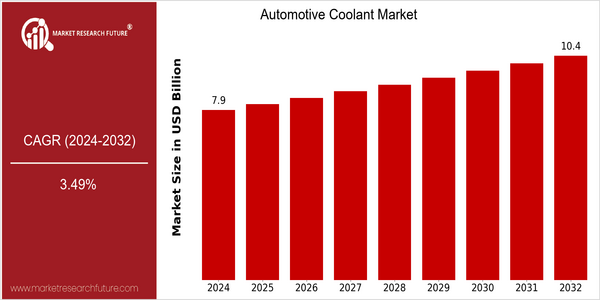


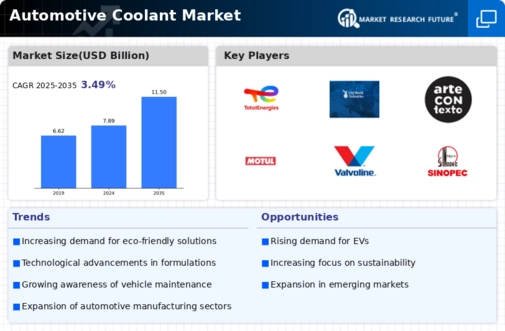
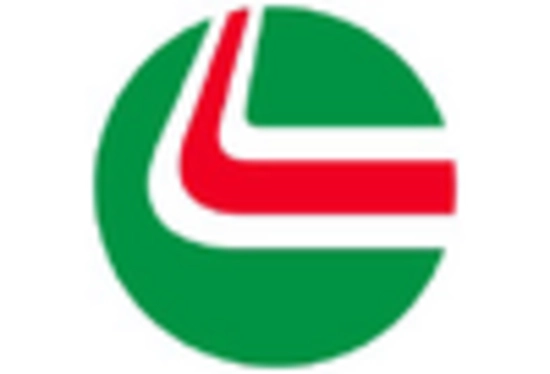
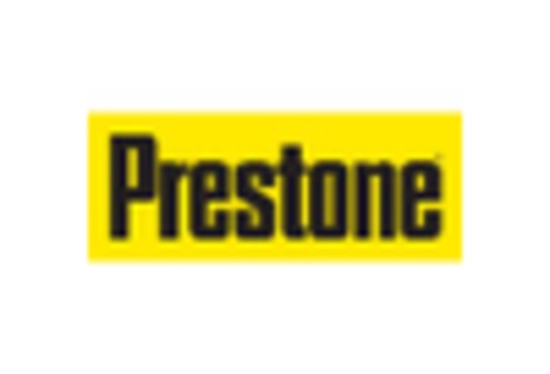
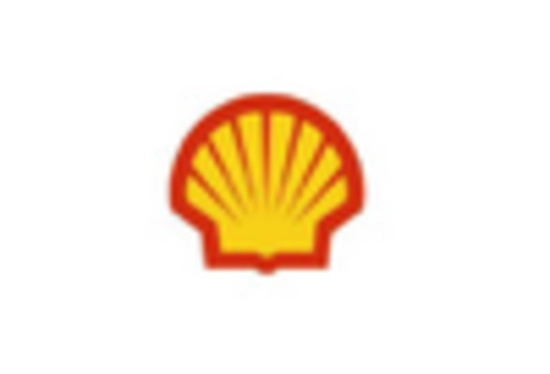
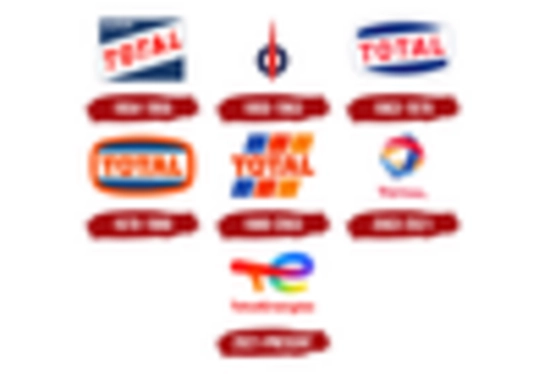
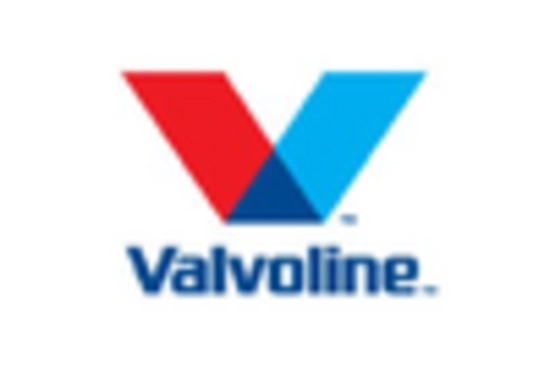
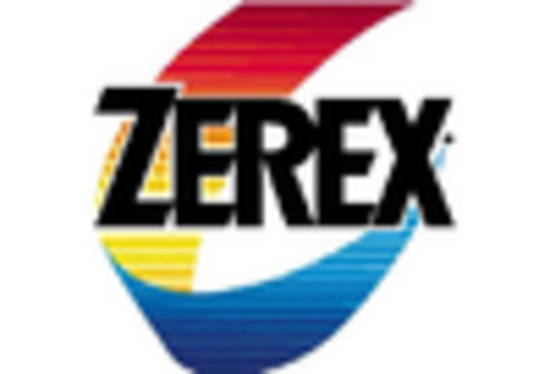

Leave a Comment